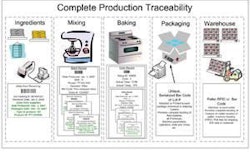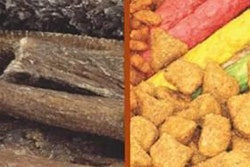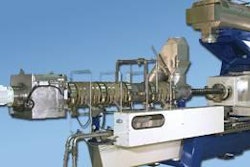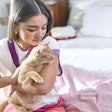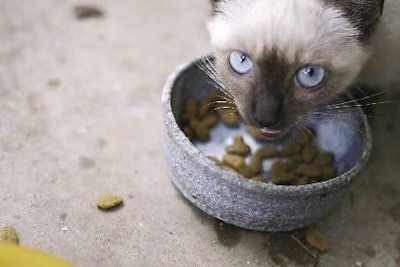
Petfood palatability is an interesting, complex and challenging topic. The term "petfood palatability" is too broad--it can be cat, dog, bird, reptile, any mammal. Even between cats and dogs, palatability requirements are different. Cats are highly finicky creatures. Developing a highly palatable dry cat food or treat itself is a big challenge for any company large or small. Most large, mid size and small petfood companies have taken an approach based on randomly trying various things and picking out the ones that works the best. But not a lot of time and effort has been spent on understanding why some things work.
A simplistic model for cat food palatability can be expressed as follows:
Cp= f ( fw, I, Iq, pro, c, ki, ks, pa, fp, bd) where:
- Cp- dry cat food or treat palatability;
- fw- formula;
- I-ingredients used;
- Iq- quality of ingredients;
- pro- process conditions;
- C- coating used (includes type and quality of liquid and dry coatings);
- ki- kibble geometry;
- ks-kibble softness;
- pa- product aroma;
- fp- finished product parameters such as proximates (moisture, protein, fat, ash, Calcium/Phosphorus ratio, vitamins and minerals, total ash, qualitative and quantitative parameters); and
- bd- bulk density (depends on the kibble geometry).
The scope of this article is about bulk density and how it can affect palatability of extruded dry cat foods or extruded dry cat treats only. Bulk density--also known as bushel weight--is an important parameter that is universally measured by all manufacturers of petfood. The bulk density measurements help in designing the right size package for the product. Bulk density also determines the palatability of extruded petfoods and treats.
Generally higher bulk density tends to decrease the palatability of extruded cat foods and treats. However, if the increased bulk density is due to formula changes such as increased level of fat or protein, it may actually increase the palatability. One caveat is the quality and quantity of fat or quality and quantity of protein or both. Vegetable fats and proteins are not palatable to cats.
Higher specific mechanical energy (SME) tends to increase the palatability. Higher SME is related to higher expansion or lower bulk density of the product. Higher SME correlates also with increased flavor creation in extruded kibbles and creates lighter kibble that is easy to break and eat. This may explain higher palatability in highly expanded kibbles.
Lower preconditioning moisture and steam is related to lower specific thermal energy. Less moisture in the preconditioner results in increased mailard reaction products. This is favorable for extruded cat food or treat palatability.
Higher protein in the formula results increased mailard reaction products. This results in higher palatability of extruded cat foods or treats.
Cats love fat, especially animal fats (beef tallow, lard, chicken fat). High level of fats tend to increase palatability even though the bulk density may go up significantly. Fats also soften the kibble and it becomes easier to eat.
Mukund Parthasarathy, PhD, worked for Ralston/ Nestle Purina for 12 years. He has patents related to petfood palatability.

